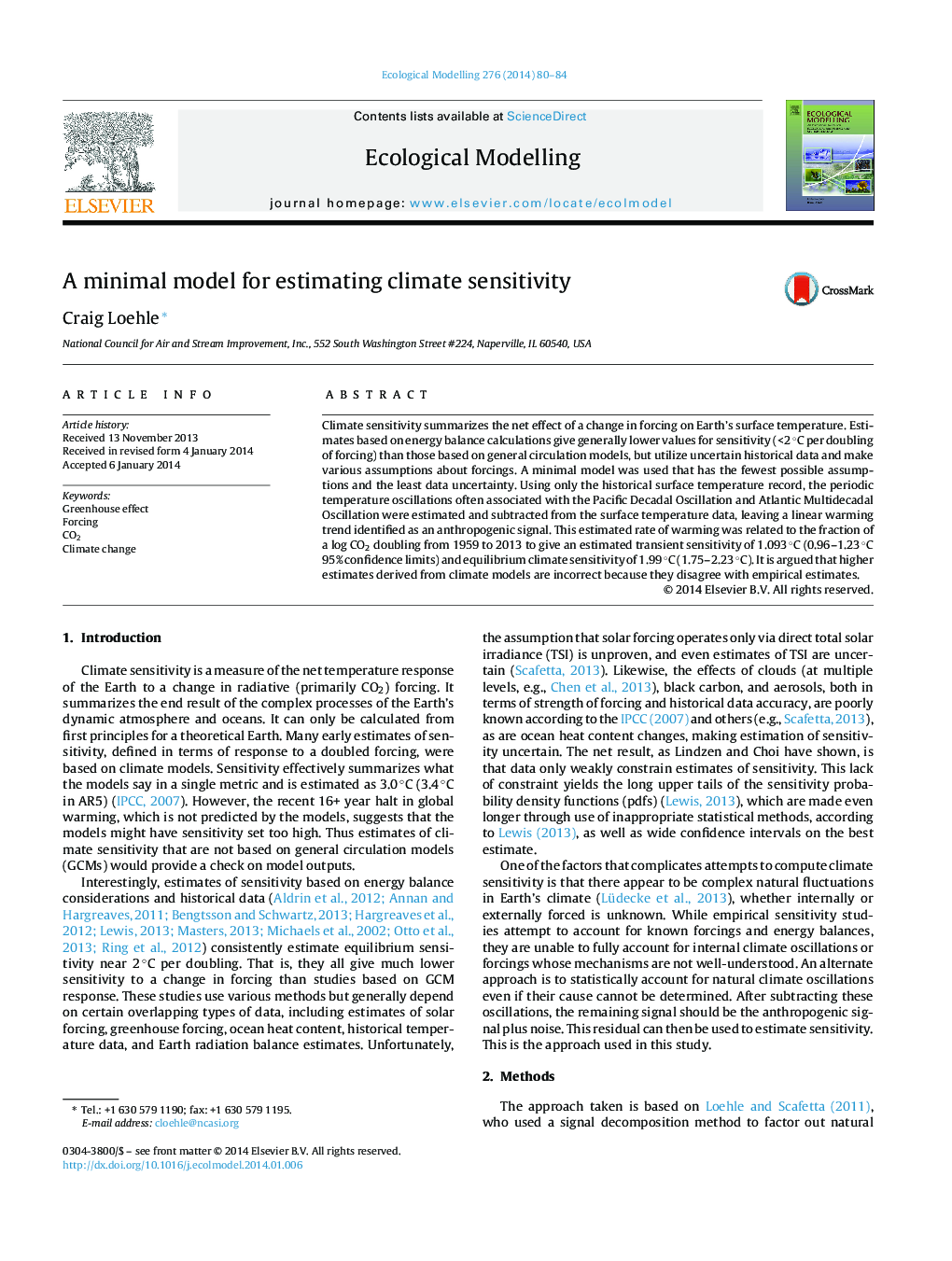| Article ID | Journal | Published Year | Pages | File Type |
|---|---|---|---|---|
| 6296894 | Ecological Modelling | 2014 | 5 Pages |
Abstract
Climate sensitivity summarizes the net effect of a change in forcing on Earth's surface temperature. Estimates based on energy balance calculations give generally lower values for sensitivity (<2 °C per doubling of forcing) than those based on general circulation models, but utilize uncertain historical data and make various assumptions about forcings. A minimal model was used that has the fewest possible assumptions and the least data uncertainty. Using only the historical surface temperature record, the periodic temperature oscillations often associated with the Pacific Decadal Oscillation and Atlantic Multidecadal Oscillation were estimated and subtracted from the surface temperature data, leaving a linear warming trend identified as an anthropogenic signal. This estimated rate of warming was related to the fraction of a log CO2 doubling from 1959 to 2013 to give an estimated transient sensitivity of 1.093 °C (0.96-1.23 °C 95% confidence limits) and equilibrium climate sensitivity of 1.99 °C (1.75-2.23 °C). It is argued that higher estimates derived from climate models are incorrect because they disagree with empirical estimates.
Related Topics
Life Sciences
Agricultural and Biological Sciences
Ecology, Evolution, Behavior and Systematics
Authors
Craig Loehle,
